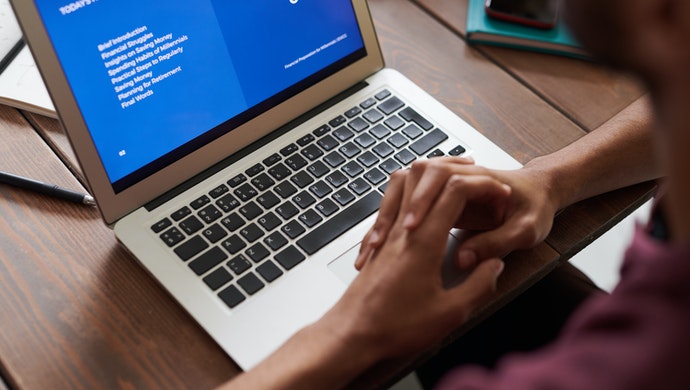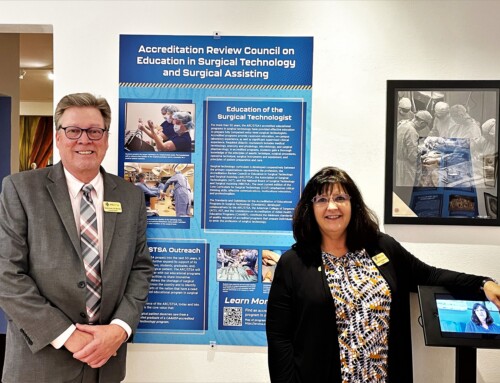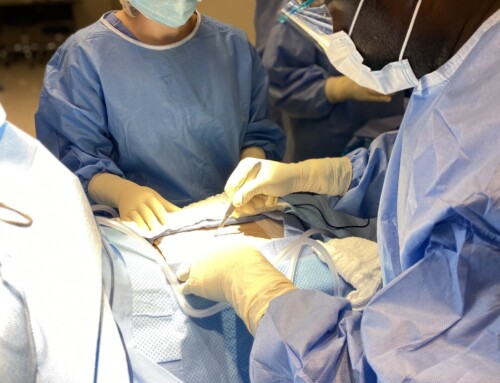 Featuring Logan Threet, AAS, CST, Director of Surgical Technology at Wichita State University Campus of Applied Sciences and Technology
Featuring Logan Threet, AAS, CST, Director of Surgical Technology at Wichita State University Campus of Applied Sciences and Technology
School and clinical closures have caused institutions to quickly assess how to help their students learn in a new, virtual environment. We spoke with Logan Threet, AAS, CST, director of surgical technology at Wichita Sate University Campus of Applied Sciences and Technology, to understand how his institution made the transition, as well as how he collaborated with other organizations to keep their semester going strong. Gain his perspective on the situation, as well as resources for your organization during this challenging time.
When school and clinical closures were announced, what was your team’s action plan? What discussions were had, and what steps did you take to maintain as much normalcy as possible?
We first took steps to ensure we were doing our part to aid in the screening of our clinical students, to ensure we were not adding stress to our clinical partners. We then looked at our didactic classes. We had many meetings and calls, and evaluated what could be done to keep students on track in an online format. We reached out to all our publishers and were able to secure access to a great deal of content for students. We then participated in educator forums to share our plans and resources, and learn about others’ initiatives. My faculty and I met to develop a plan, and then divided up the workload. One key point to add is how important it is to your students to be honest, stay calm and be upfront about expectations.
Part of your program’s response was an assessment of elements that could or could not be moved online. Can you tell us about that assessment, and how other programs can take a similar approach?
Two aspects of the program that cannot be taught online are lab and clinical. With our lab classes, we really had to get creative. One step we took was looking at what we could make available to students at home, to keep them working on basic skills (gowning/gloving, opening and setups). We chose to add some resources like surgical packs and instrument kits, too. This won’t allow us to do skill check offs, but it will allow students to stay engaged and work on the basics. We realize we will need review lab classes when we are allowed back, but at least we won’t start from day one.
Of course, every college is different — some have the resources, while others may not due to shortages. We evaluated what we could do and offer. I have shared with many colleagues, “We are all in the same boat, just looking for a different life raft.”
On the clinical side, many of our sites stopped all elective procedures. We took what was left and we divided the rotation schedule to allow as many students in as possible, for anything that might come up. We took measures to have them be on call or work a weekend shift. At this point, any cases are better than no cases. Keeping very open communication with your clinical sites is key. Explain what position you are in and what you need. Having that open door has been essential.
As social distancing practices increase, especially within hospitals, we understand a screening tool was created to help ensure students could still enter the hospital safely and as needed. Can you tell us more about that tool?
Early on, we took steps from a large hospital network to form a plan to screen our students. We wanted to show we could be part of the solution and not the problem. We had basic guidelines they wanted from us, and we were able to use those guidelines and create an entire screening questionnaire that was approved by their corporate office. This form covered the screening required for students to enter the hospital and even work with supply shipments. It was beyond gratifying to have a large network accept our screening process and say, “Thank you for being proactive and taking these steps.”
Are there resources or tools online that program directors should be aware of at this time?
So many companies have stepped up and opened resources for educators and students. Here are some things that we have taken advantage of:
- “Surgical Technology Instructors” Facebook Page: Many educators have shared tests, quizzes, PowerPoints and countless other items to support each other. I can’t even begin to express the gratitude for all those who have supported this push.
- Keep up with the ARC/STSA, AST and NBSTSA websites for current information. This is a very fluid situation that changes daily. The more you make a habit of checking for updates, the more likely you are to be aware of changes.
- Cengage has opened unlimited access to all resources, to all students and educators for the rest of the term. The representative for our area worked with us to ensure our faculty received all the access we need. She took time to help us find ways to navigate getting content added to our learning management system (LMS), too.
- Journal of Medical Insight (JOMI) has opened up all surgical videos through 30-day trials, to give students access to great surgical procedures. The content gives a bird’s eye view of the case and tone of the room. It breaks cases down from pre-op to exposure, procedure and closure. It is a great tool for clinical and didactic students.
- Mock Medical gave us the materials needed to make kits students could take home and practice basic lab skills. They have stepped up to make sure students have quality materials in their kits, while keeping in mind safety (i.e. making tools less sharp for at-home use). They have taken every call and email, and have a ton to offer. Mock Medical took a stance that shows its dedication to our programs. Many of us donated PPE to local hospitals as their supplies dropped. Mock Medical sent an email recognizing what we gave up for those in the field and offered 10% off lab re-stock orders of Mock Medical brand PPE. This is their “pay-it-forward” initiative.
- We use SimuLab for a lot of our simulation products. SimuLab is a manufacturer that has been designated as an essential business to aid in training for the COVID-19 response. We are using tissue pads from SimuLab to make a cut and use the instruments to practice holding retraction. These pads also are great for teaching how to place skin staples. Having some of these tissues at home allows us to set up a webcam and demonstrate a skill or technique in real-time versus showing a pre-recorded video.
- Evolve/Elsevier, FA Davis and so many other book publishers have put COVID-19 plans in place to give students as much content as they can.
Is there anything else you would like to add?
I encourage everyone to reach out to your vendors. Take the time to explain your needs for didactic work or basic skill items. You will find that many will be able to help you and offer guidance.
Talk with your administration, too. Articulate what your needs are and what resources you will need to keep things going. Dig into the basics, like using Zoom or a device needed to work from home. Think long term: If you do nothing and have to put your current class on hold, how will that impact your next cohort?
Lastly, reach out to other programs, ones in your area or instructors and directors you have met over the years. You will be amazed by the amount of support that is available if you ask. I think it is clear that many of us are here and happy to help.
The resources shared in this article are the author’s preference and intended for information-sharing purposes only. Sharing this information does not indicate promotional endorsement from ARC/STSA.



